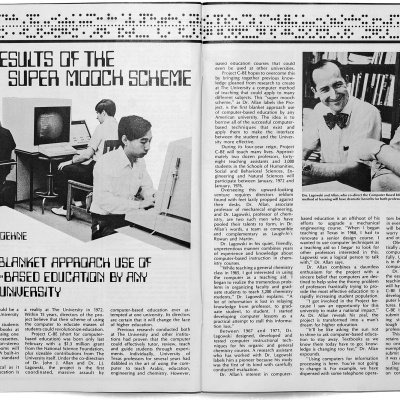Supreme Court Revisits UT's Use of Race in Admissions

It was deja vu today at the United States Supreme Court, as the justices treaded and re-treaded familiar ground regarding the legality of using race in admissions at the University of Texas. The Court heard this same case in 2012 before remanding it back to the appeals court with clearer instructions about how it wanted UT's admissions program evaluated.
Three years later, after the Fifth Circuit once again upheld UT's program, the case was back with the high court. Perhaps surprisingly, several of the justices wondered aloud about remanding the case once again. Conventional wisdom going into oral arguments held that the Supreme Court would not have agreed to hear the case again if it did not intend to strike altogether the use of race as a factor in admissions, or at least to conclude that Texas' Top 10 Percent Law was a sufficient substitute.
The University of Texas has a unique system among public higher education in how it tries to achieve the educational benefit of a diverse class. Three-fourths of the freshman class is admitted automatically through the Top 10 Percent Law. Top 10 has had the effect of increasing minority representation on the campus without explicitly using race as a factor. Texas statute caps Top 10 admits at 75 percent of a class. Should UT strike the use of race in admissions, that cap would go away. At issue, though, is how the remaining quarter of the class is selected, a holistic review in which race is considered along with test scores, extracurriculars, essays, and other factors.
Abigail Fisher, the plaintiff, applied to the university in 2008 and was not automatically admitted because she was not in the Top 10 percent of her class. Under holistic review, she was denied admission. Fisher sued, arguing that the program denied her equal protection of the law under the Fourteenth Amendment.
Just as in 2012, much of the discussion swirled around key legal phrases drawn from previous affirmative-action cases. Does UT's holistic review meet the "strict scrutiny" test? Is the Top 10 Percent Law a sufficient mechanism for achieving the "critical mass" as articulated in the 2003 case Grutter v. Bollinger, and how does one measure critical mass? Does the university have a "compelling interest" in diversity, and is the program aimed at reaching it "narrowly tailored"?
Justice Anthony Kennedy, widely considered the swing vote, expressed frustration that the Court was hearing the case once again without new information to guide it.
"It does seem to me, as Justice Alito's question, and frankly some of the other questions have indicated," Kennedy said, "that the litigants, and frankly this Court, have been denied the advantage and the perspective that would be gained if there would be additional fact-finding under the instructions that Fisher sough to give. And that we're just arguing the same case."
The chief point of contention between the plaintiff and the university boiled down to whether race could and should be used in holistic review. Fisher's attorney, Bert Rein, argued that the university could achieve the diversity it sought by weighting more heavily socio-economics in holistic review and omitting race altogether. The university argued that such a system existed before and led to a sharp decline in minority students on campus, which is why race was added to holistic review in the first place.
In a bizarre moment, Justice Antonin Scalia appeared to question whether it was even advisable that African-American students be admitted to the University of Texas at all.
"There are those who contend that it does not benefit African Americans to get them into the University of Texas where they do not do well, as opposed to having them go to a less-advanced school, a slower-track school where they do well," Scalia said. "One of the briefs pointed out that most of the black scientists in this country don't come from schools like the University of Texas. They come from lesser schools where they do not feel that they're being pushed ahead in classes that are too fast for them." The idea Scalia was referring to was the "mismatch theory," which argues that affirmative action can harm those it intends to help by placing them into situations in which they cannot succeed.
The university's attorney, Gregory Garre, responded by questioning the advisability of Scalia's contention.
"I don't think the solution to the problems with student body diversity can be to set up a system in which not only are minorities going to separate schools, they're going to inferior schools," Garre said.
Scalia's comment immediately drew charges of racism, and on Twitter many University of Texas alumni started posting photos of themselves from graduation with the hashtag #BlackTexasEx.
Following oral arguments, Abigail Fisher thanked the Project on Fair Representation, which has supported her case, and the Supreme Court for hearing it once again.
"Like most Americans, I don't believe students should be treated differently because of their race," she told reporters. "Hopefully, this case will end racial classifications and preferences at the University of Texas."
UT-Austin president Gregory Fenves expressed his confidence that the UT admissions program fit the requirements of the law and would be upheld. In an email to the campus community, Fenves argued the merits of a diverse campus.
"UT prepares tomorrow’s leaders for a world that is increasingly global and interconnected," he said. "It’s vital that our students have the opportunity to work with students from different backgrounds and experiences—and the freedom to learn from the myriad perspectives, viewpoints, and ideas that should flourish on campus."
Since both the district court and the Fifth Circuit have upheld the university's admissions program, it would take five justices to side with Fisher for the program to be struck down. A four-four tie would leave the program in place. Justice Elena Kagan recused herself.
Above: Gregory Fenves, president of the University of Texas at Austin, speaks to members of the media in front of the U.S. Supreme Court building on Wed., Dec. 9. The university defended its use of race in admissions and the benefits of diversity in higher education before the U.S. Supreme Court in the case of Fisher v. University of Texas at Austin.
Photo by Marsha Miller
Editor's Note: The Texas Exes takes no position on the Fisher case or the use of race in admissions.






